Behind glass partitions in the Rebbe’s room, one can grab a glance at the seforim that the Rebbe kept on hand, in his office, to use at any given moment. They tell a fascinating story… Part 2 of an extensive gallery of the Rebbe’s room.
By Anash.org writer
Behind glass partitions in the Rebbe’s room, one can grab a glance at the seforim that the Rebbe kept on hand, in his office, to use at any given moment. They tell a fascinating story…
For many decades, the Rebbe’s room was constantly full of seforim, with piles of books stacked up on the Rebbe’s desk, table, and even on the floor. In photos where one sees the Rebbe standing at the entrance to his room, one cannot miss the colossal amount of seforim in the small room.
Nonetheless, the seforim that are on the bookshelves in the Rebbe’s room have a unique standing. They were seforim that were not taken from the library and returned, but rather ones that remained on hand for the Rebbe to use or reference whenever needed. And as such, they provide a fascinating window into the subjects the Rebbe held dear.
After noting the “basics” of the Jewish canon, such as Shas, Mishnayos, Mikraos Gedolos, Medrash, Rambam, Tur and Shulchan Aruch; essential Halacha seforim such as Aruch Hashulchan and Mishna Berura; the main works of Kabbala including the Zohar and Kisvei Ha’Arizal; and many of the works of the Chabad Rebbeim; one cannot help but notice the obvious chavivus the Rebbe had towards encyclopedic works.
A quick scan of the bookshelves shows a set of Encyclopedia Talmudis, Sdei Chemed – a halachic encyclopedia, Torah Shleima – an encyclopedic work on the Chumash, Otzar Haposkim – which complies sifrei sha’alos uteshuvos on Shulchan Aruch, along with l’havdil, Encyclopedia Judaica (laid on their spine due to their height and shelf position), Americanized Encyclopedia Britannica, and the ‘Jewish Encyclopedia’ in Russian.
There are also smaller encyclopedic works, such as Encyclopedia Aderes Eliyahu – an encyclopedia on Zohar and Kabbala, Otzar Ma’amarei Halacha, Otzar Ha’agadah, Otzar Midrashim, Michlol Hamaamarim Vehapisgamim, Encyclopedia L’agados Hatalmud, and a number of others as well. One also sees a ‘Dictionary and Thesaurus of the Hebrew Language’ by Eliezer Ben‑Yehuda, and ‘Der Otzar fun di Yidisher Shprach’ by Nahum Stutchkoff.
A closer look will show the authors and gedolei yisroel whom the Rebbe held in high esteem. It is well known that the Rebbe held the Rogatchover Gaon in the highest regard. In the Rebbe’s room, one can find a copy of every sefer of his Torah that was published prior to Gimmel Tammuz. Works by the Minchas Elozor of Munkatch are found on a number of shelves, and a number of seforim from Harav Shlomo Yosef Zevin also appear. Interestingly enough, among the ones seen are his Sippurei Chaassidim.
Of no surprise is the shelf of works by the gedolei hachassidus, including Kedushas Levi from Harav Levi Yitzchok of Berditchev; Toldos Yaakov Yosef by Harav Yaakov Yosef of Pollonye; Maor Einayim by Harav Menachem Nachum of Chernobyl, Tzidkas Hatzadik from Harav Tzadok Hakohen of Lublin, and others. The edition of Shivchei Haba’al Shem Tov published by Rabbi Yehoshua Mondshine is also on the same shelf.
Looking carefully at each shelf, one may notice a set of Sheorim Metzuyonim Behalacha – authored by Harav Shlomo Zalman Braun, grandfather of Harav Yosef Braun; at least two volumes of Leshem Shevo V’achlama – works on Kabbalah by Harav Shlomo Elyashiv, grandfather of Harav Yosef Elyashiv. The Rebbe personally requested his works, and seemingly kept this in his room for decades, despite the fact that he disagrees with the Ba’al Shem Tov in one of his seforim. Also found is a Kitzur Shulchan Aruch, a mimeograph copy of Biur Tanya – the commentary on Tanya by the famed chossid Reb Shmuel Groinem Esterman, and many works of Chassidus in manuscript form.
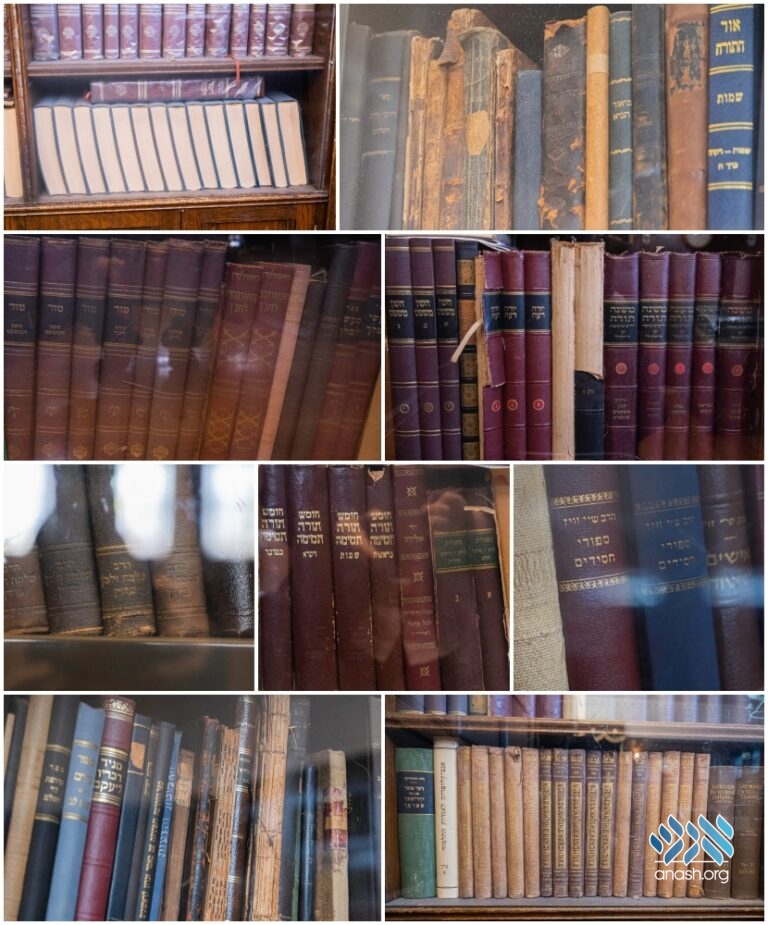
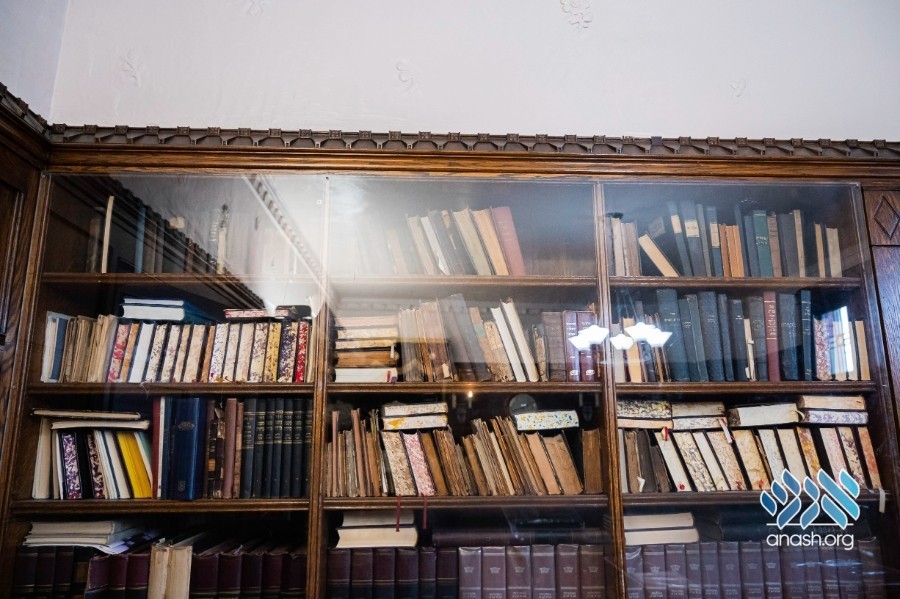
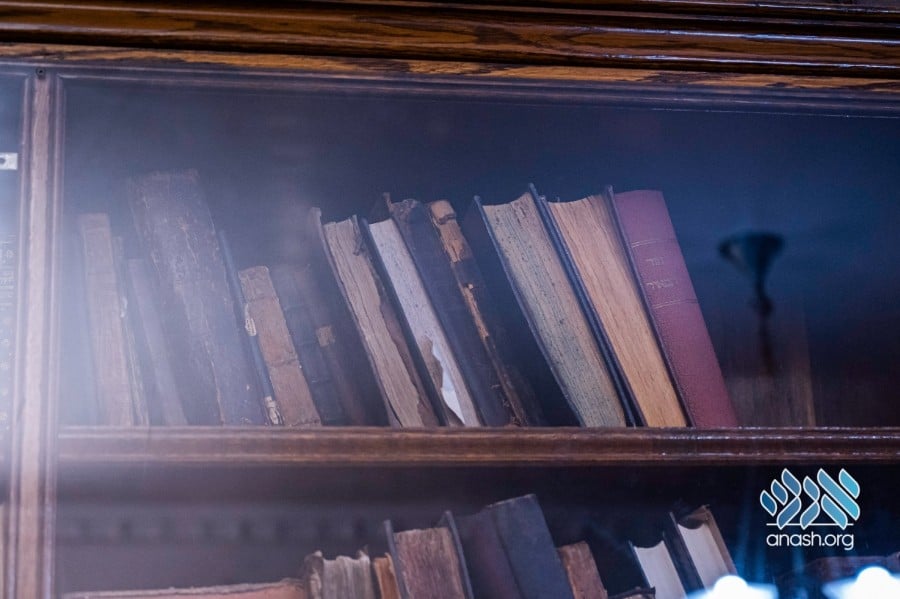


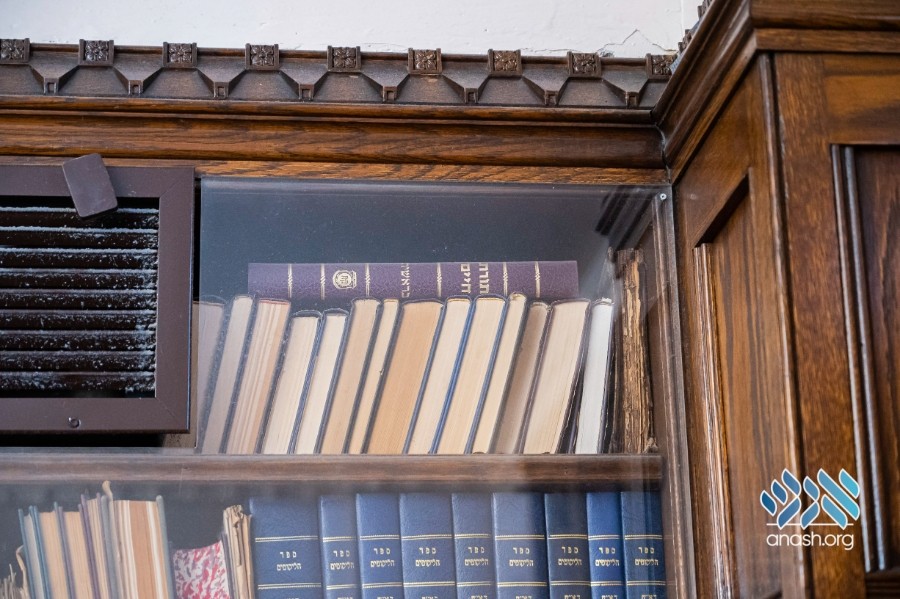
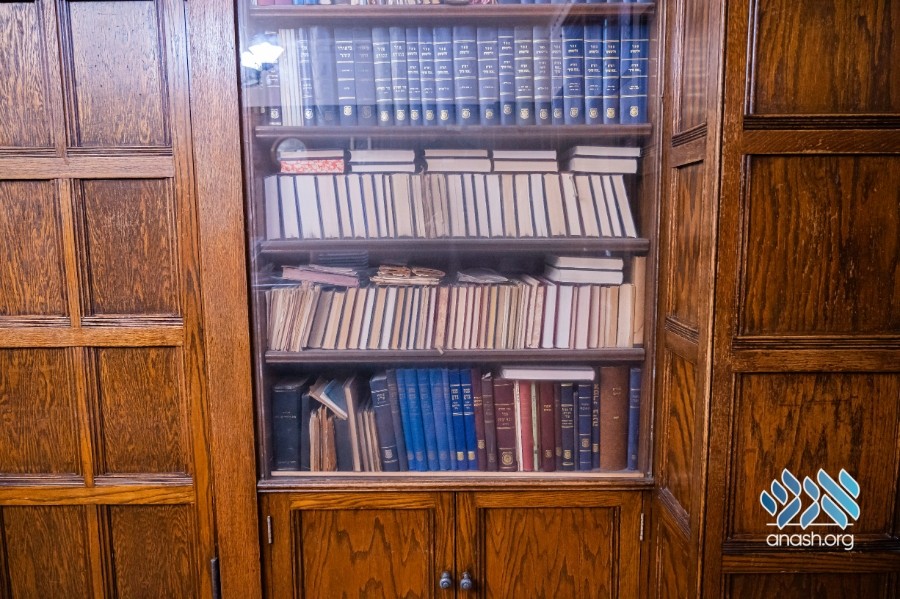

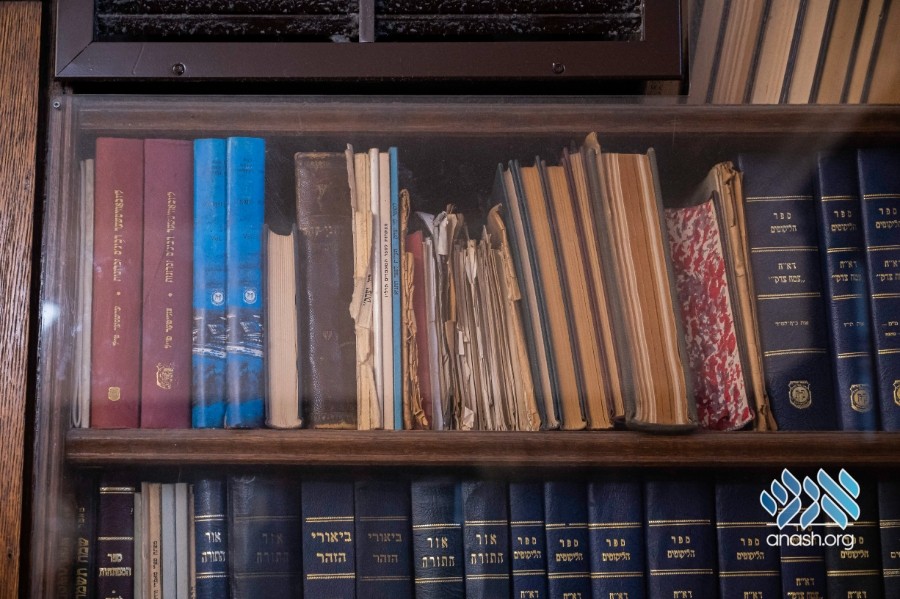
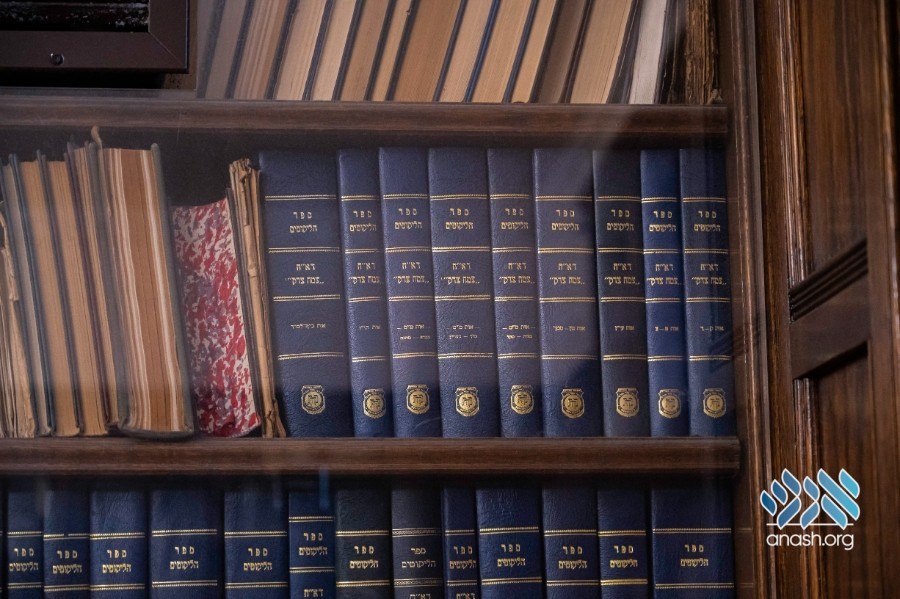



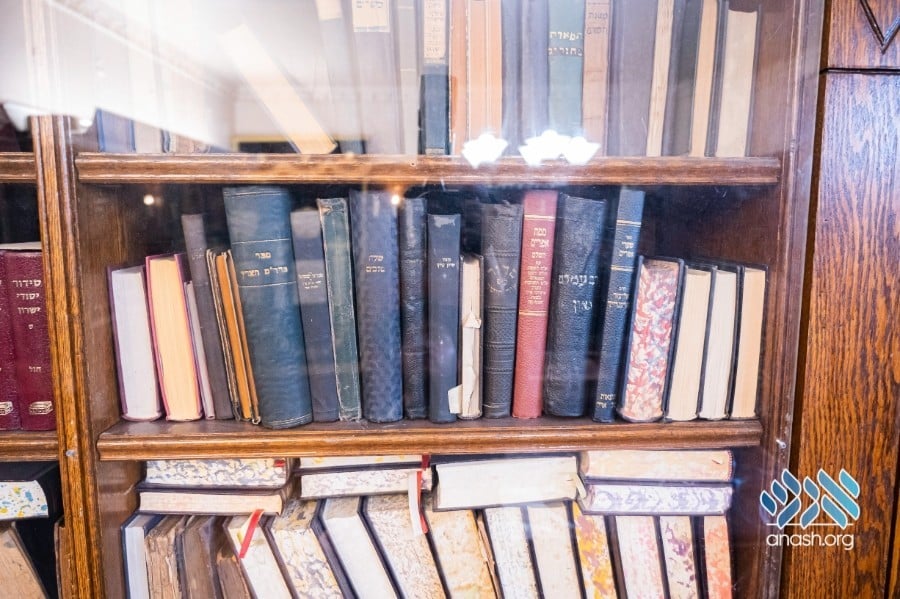
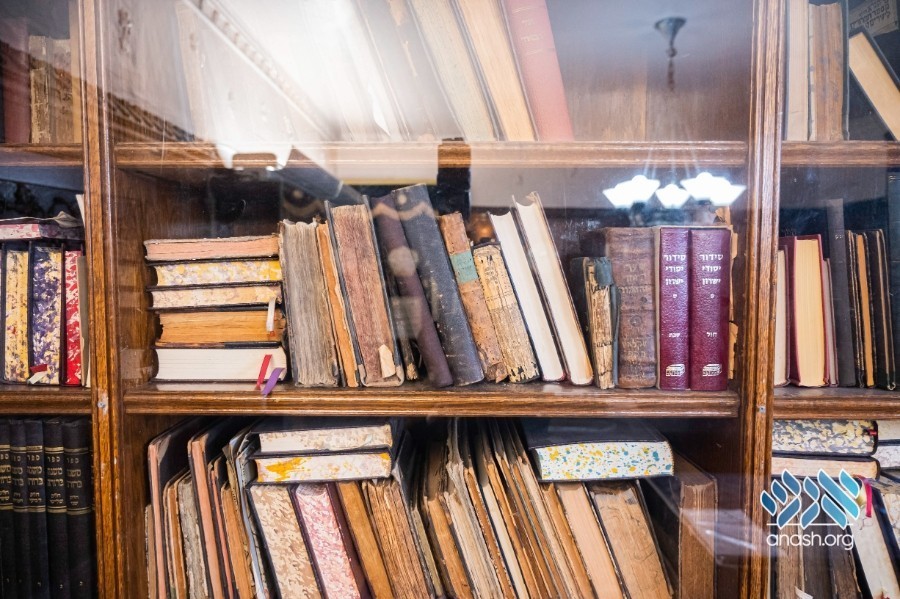
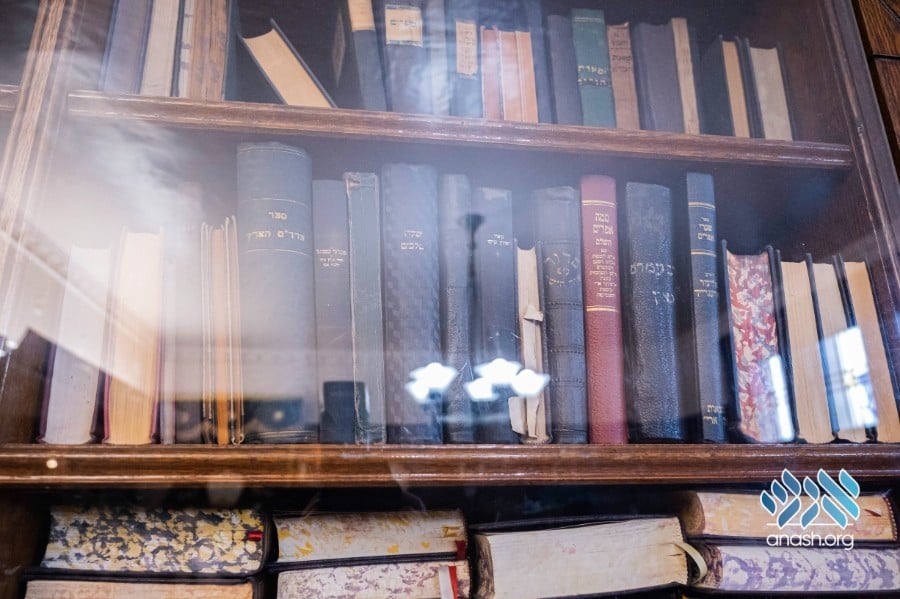

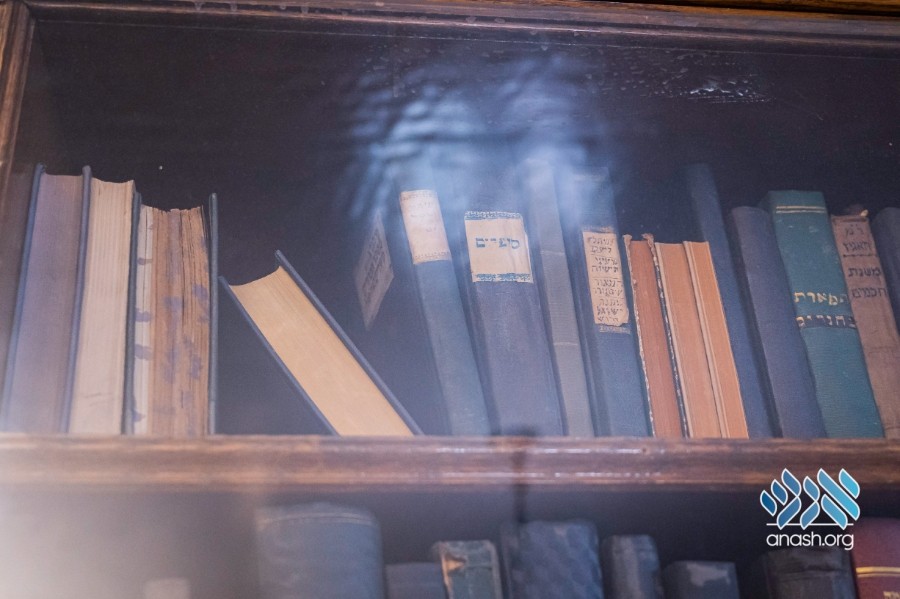
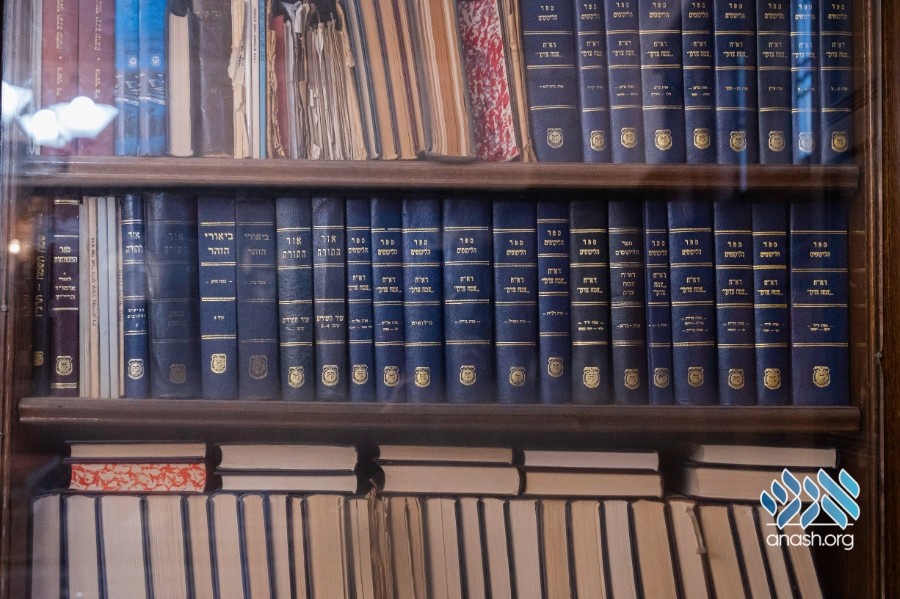

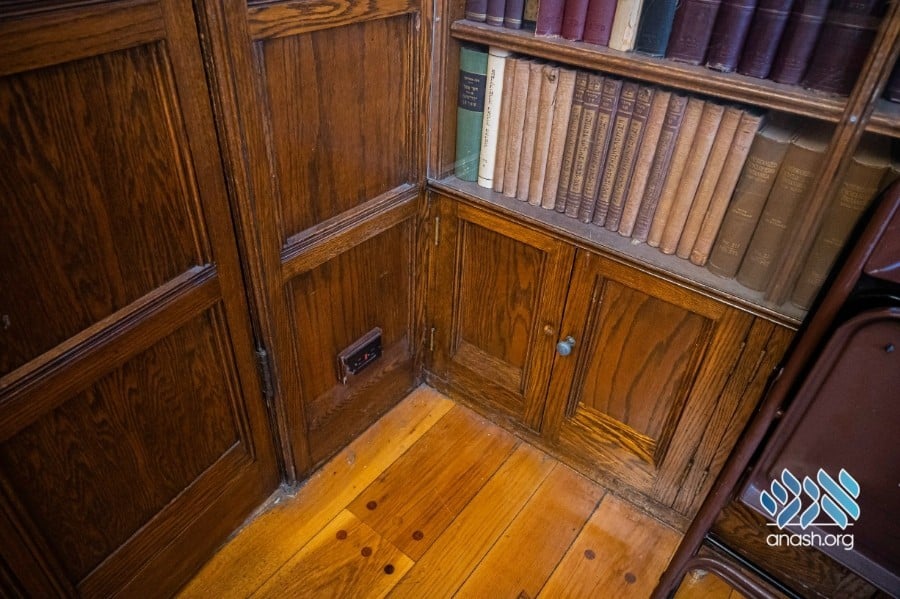
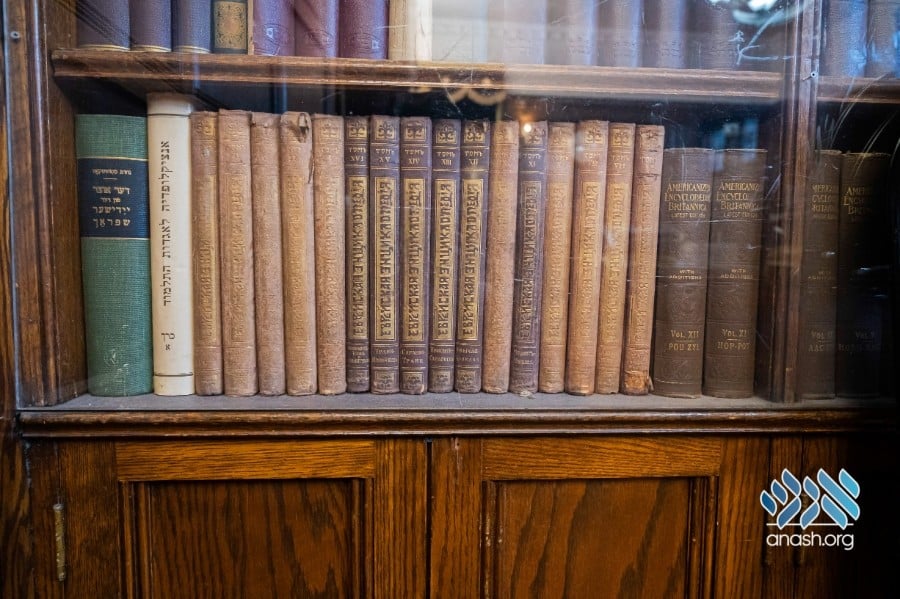
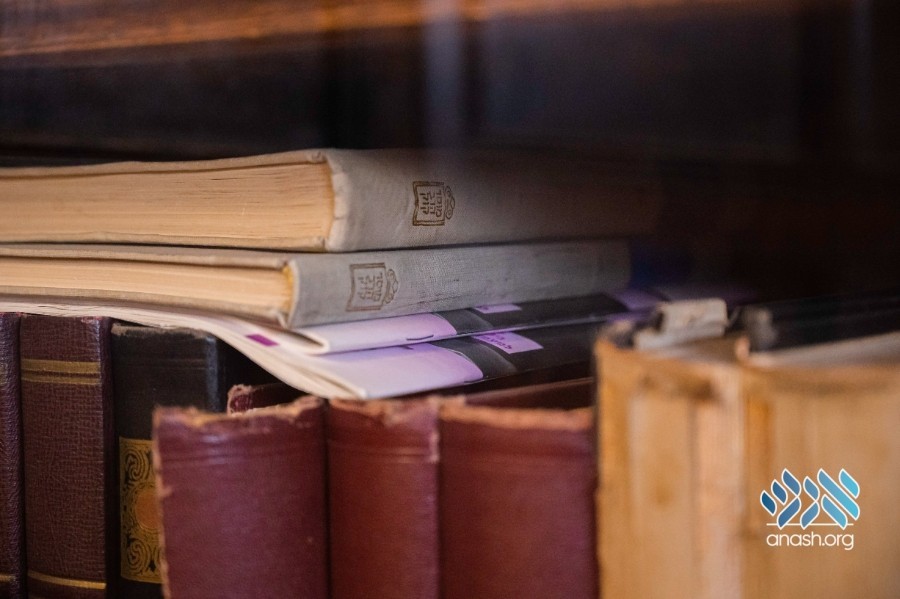
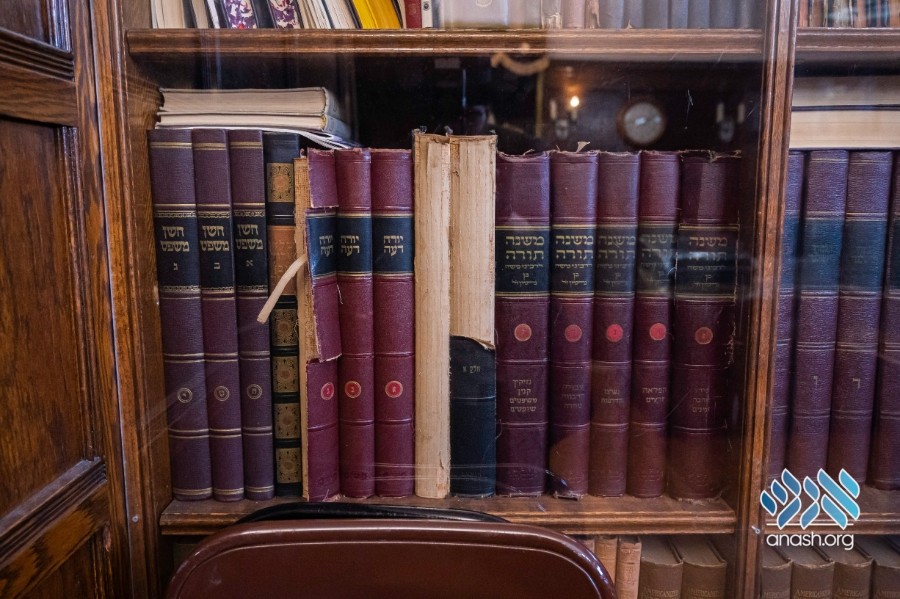
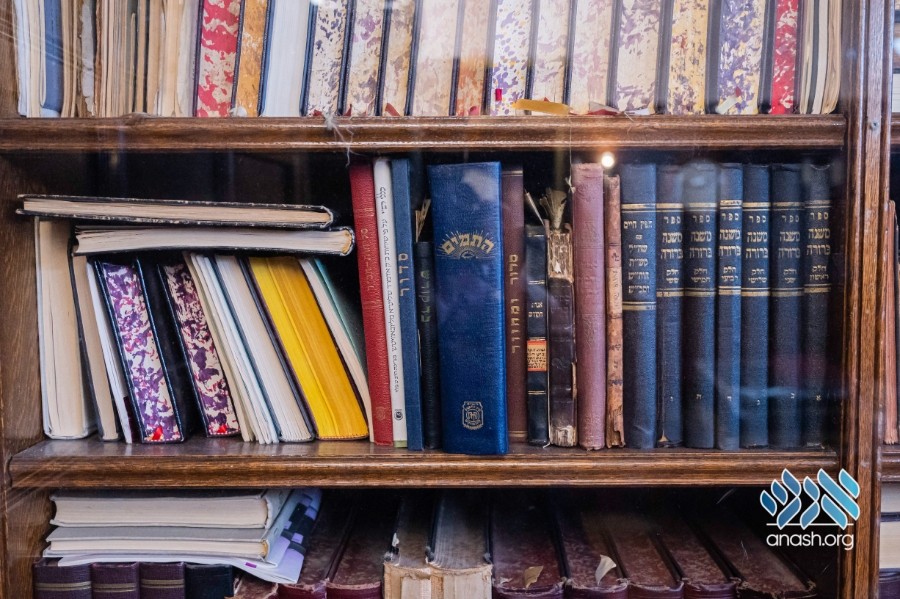
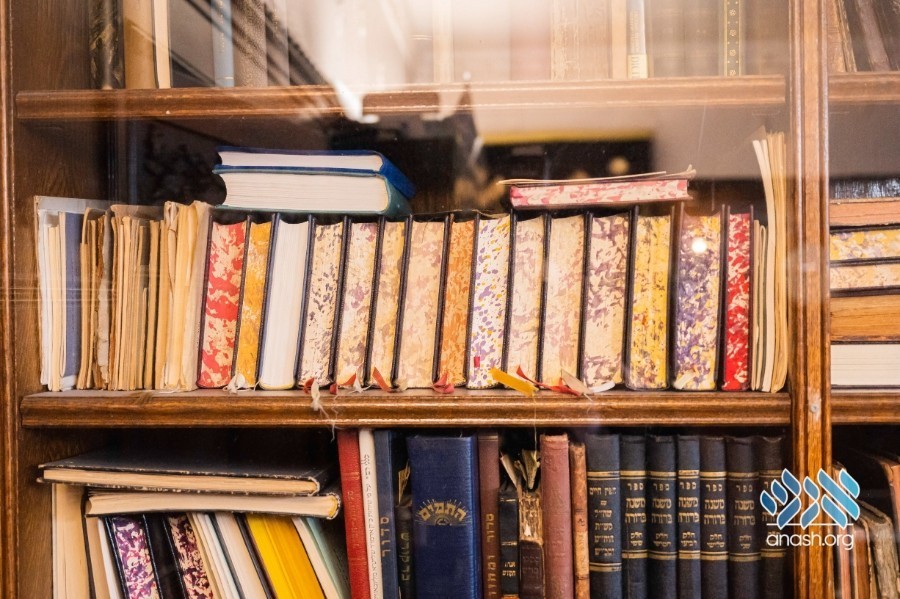
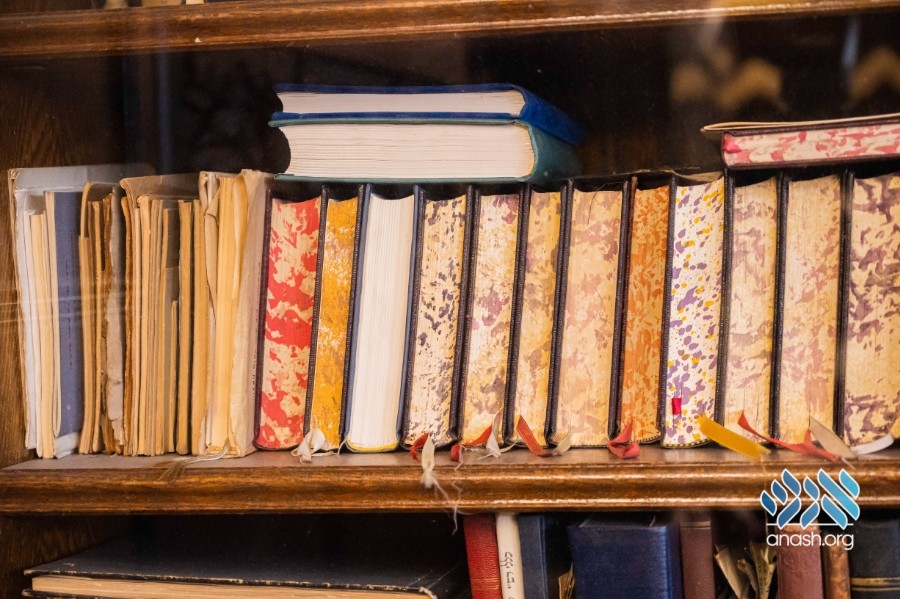
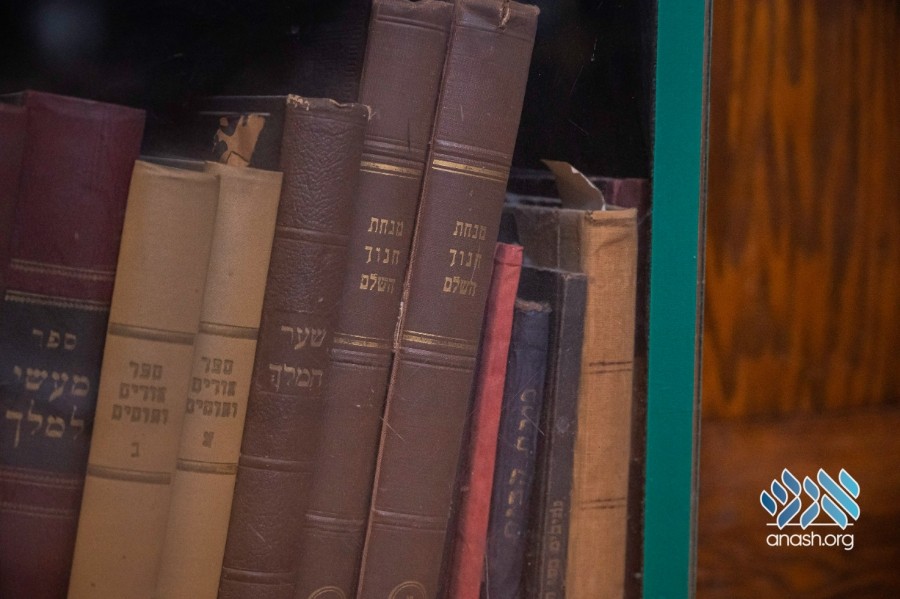

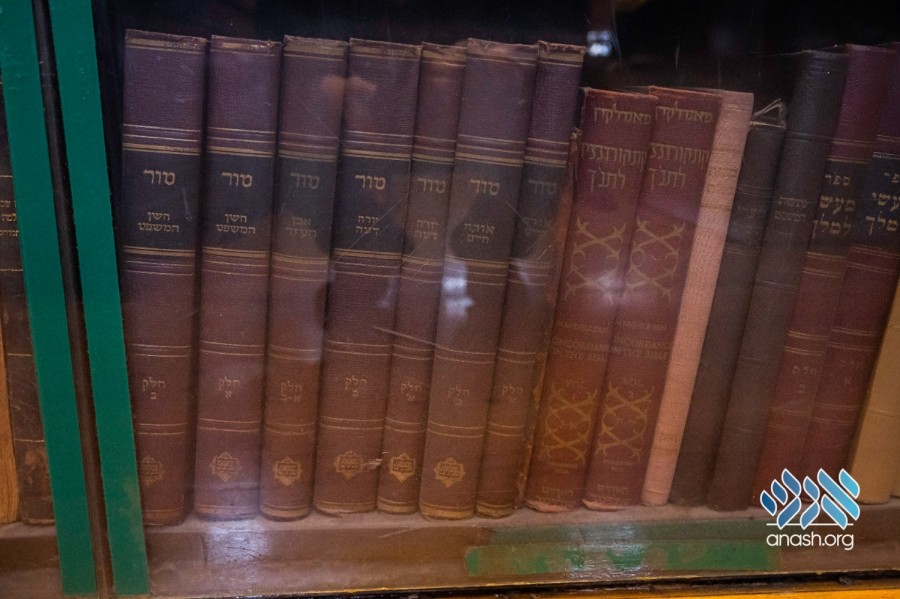

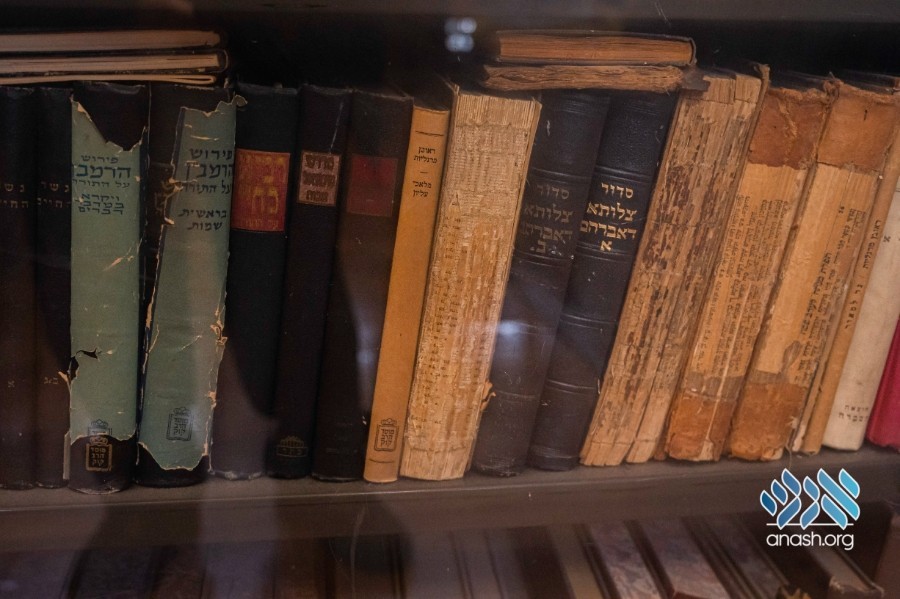



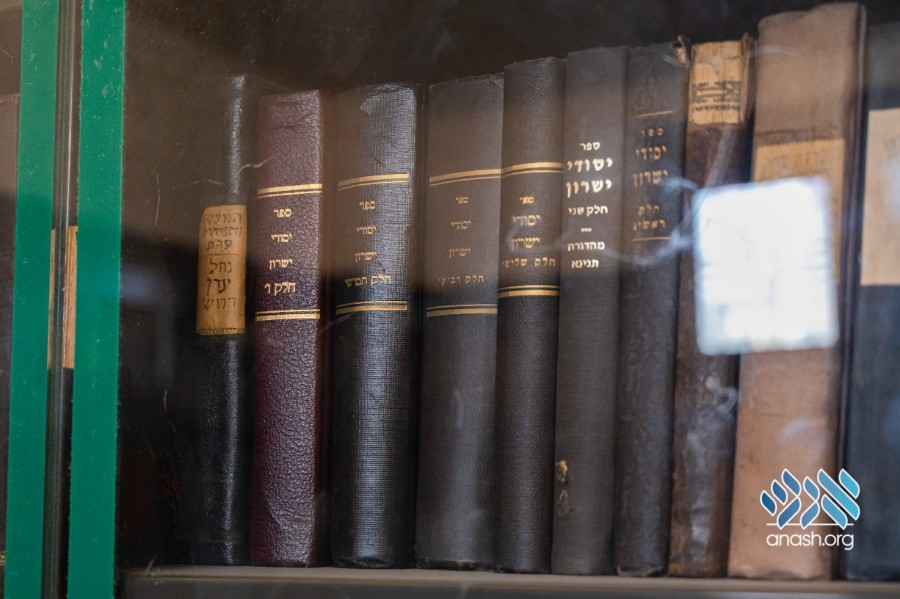

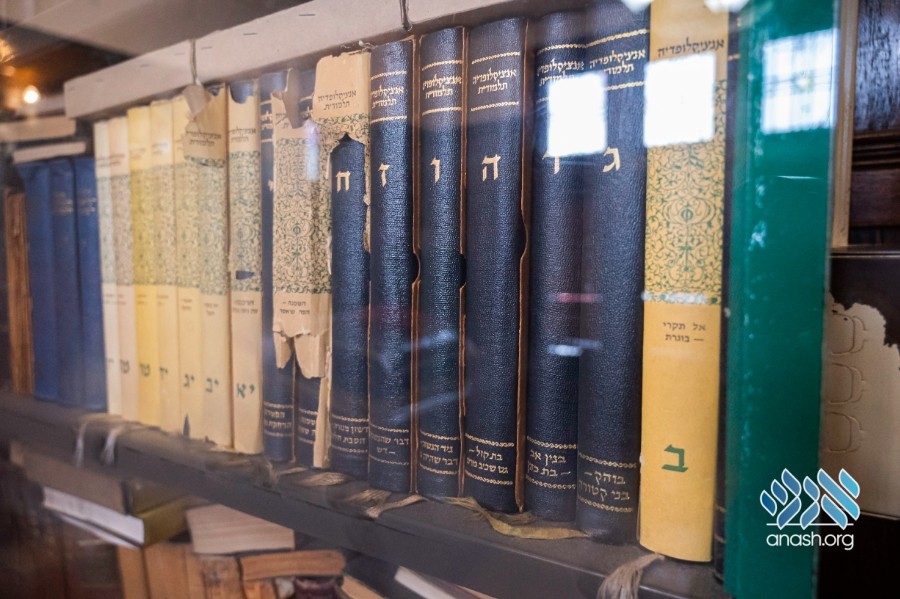
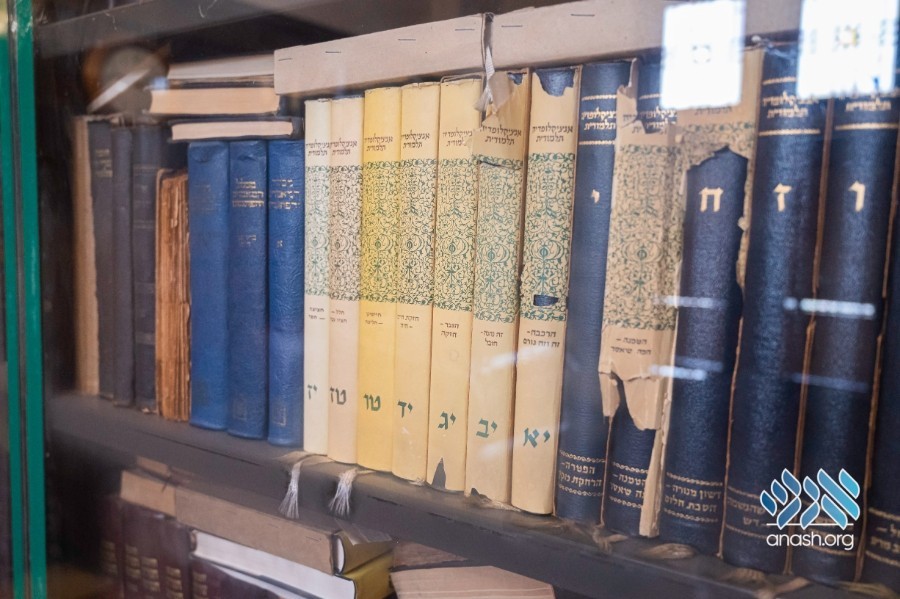


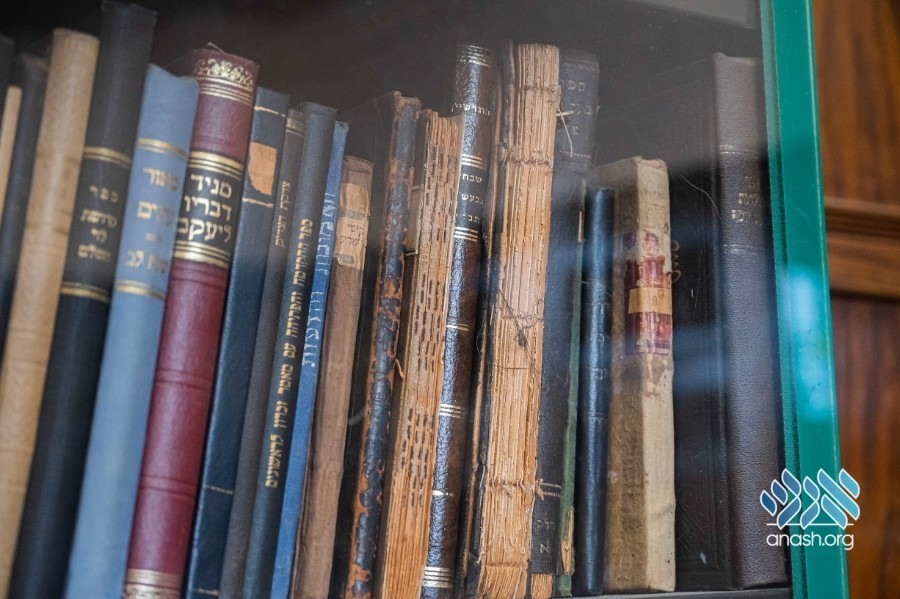
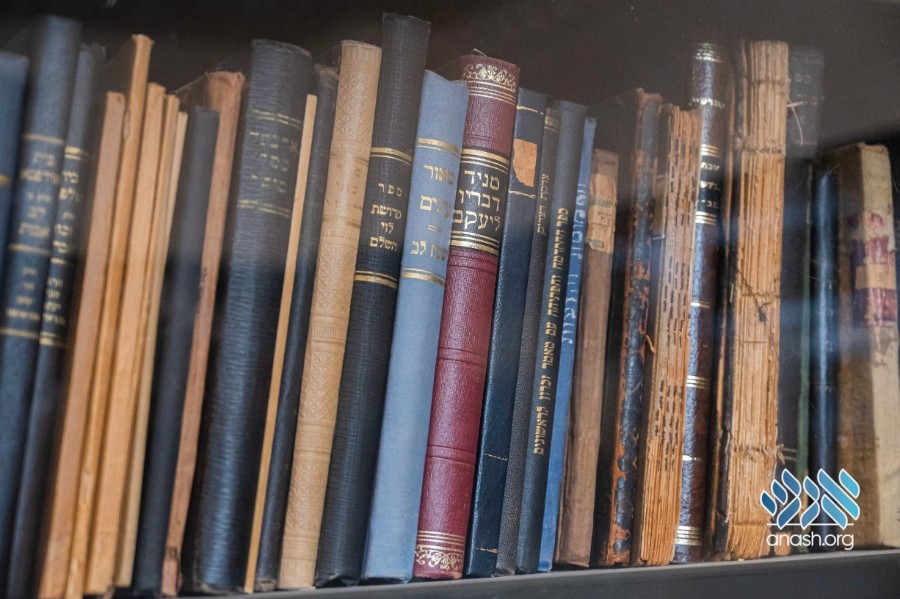




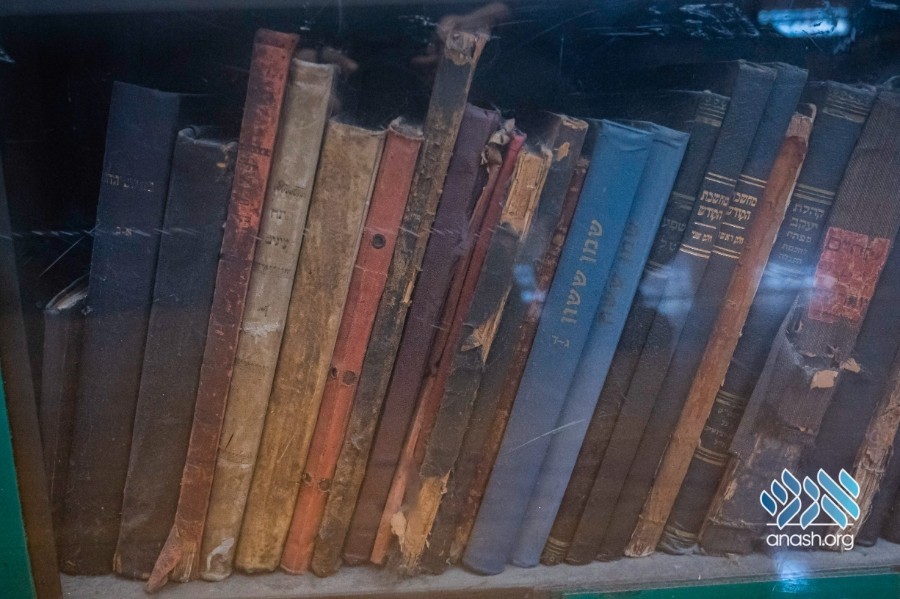
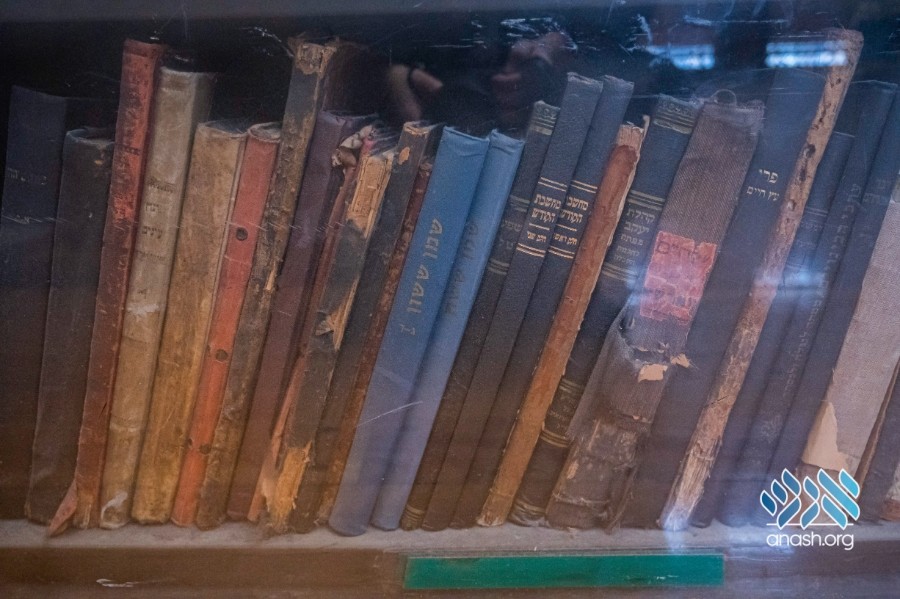


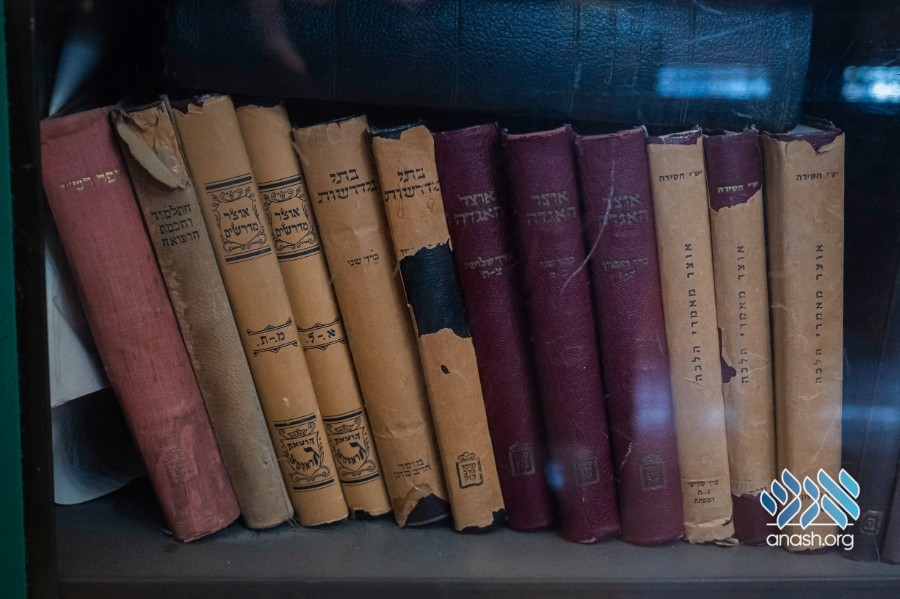
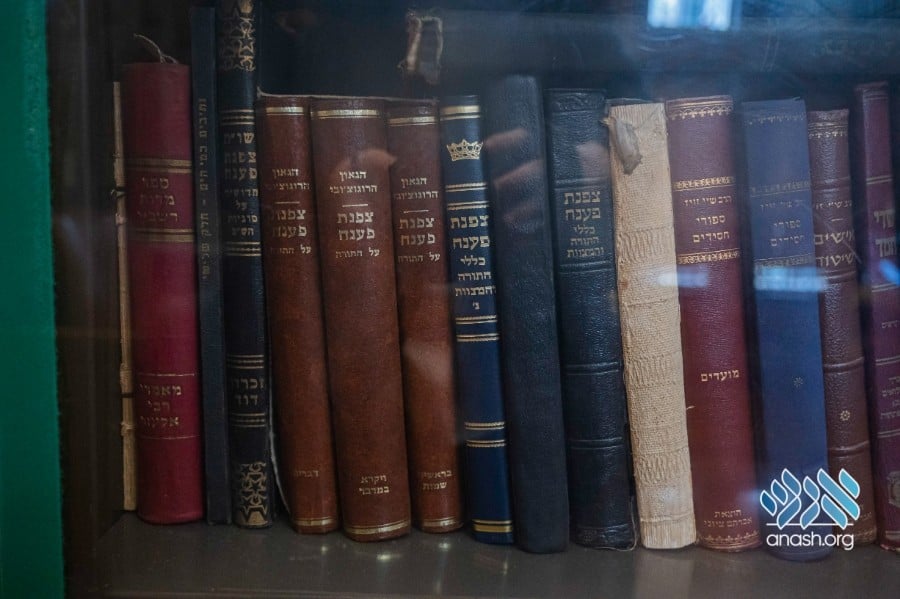
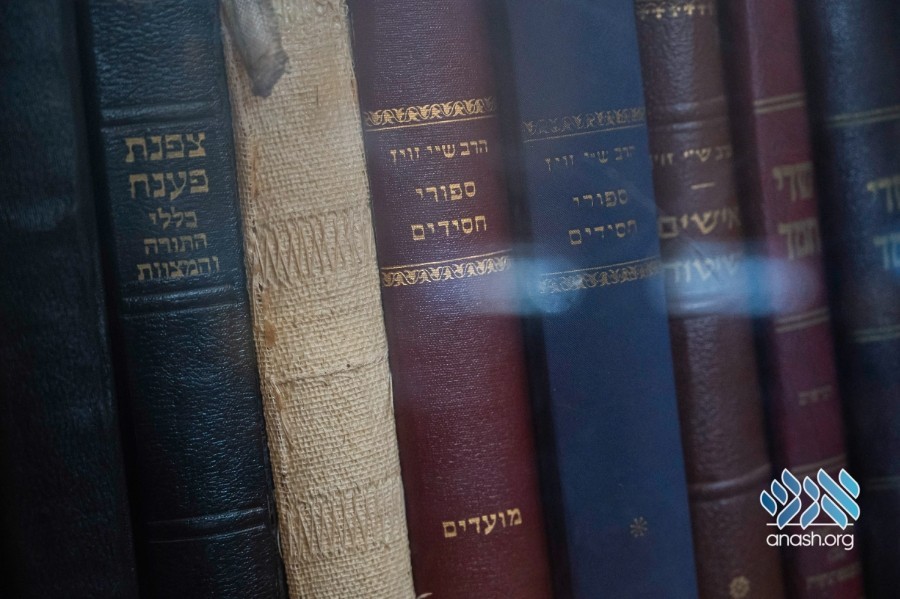

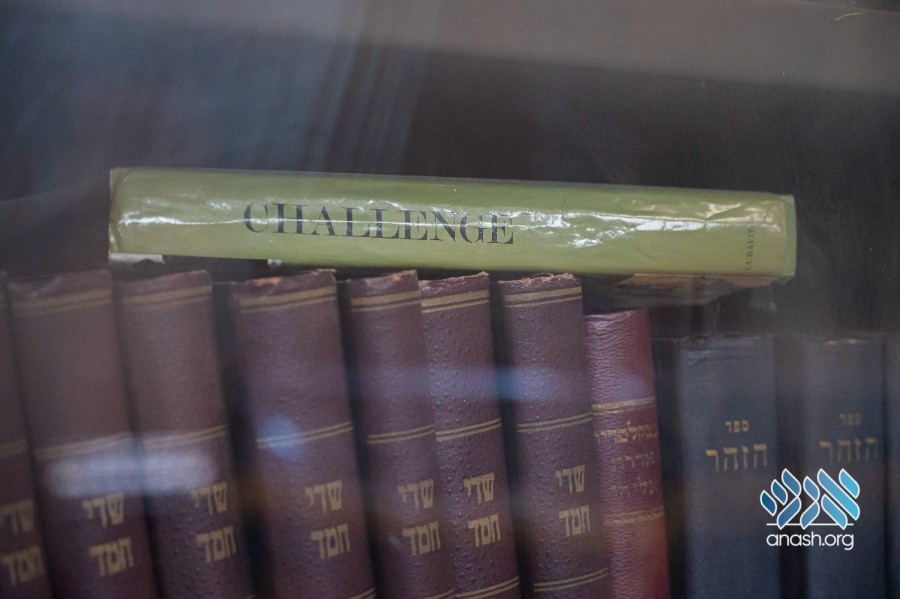
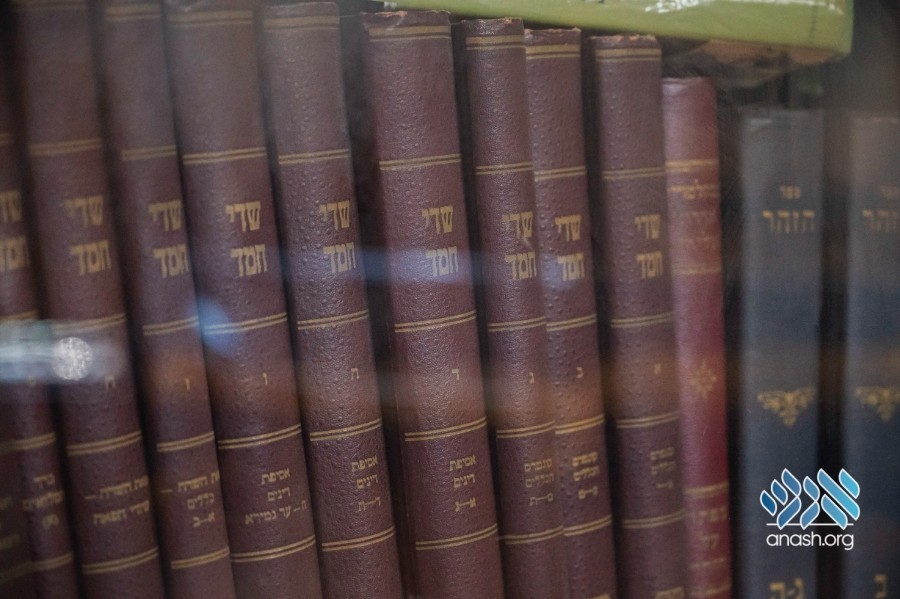

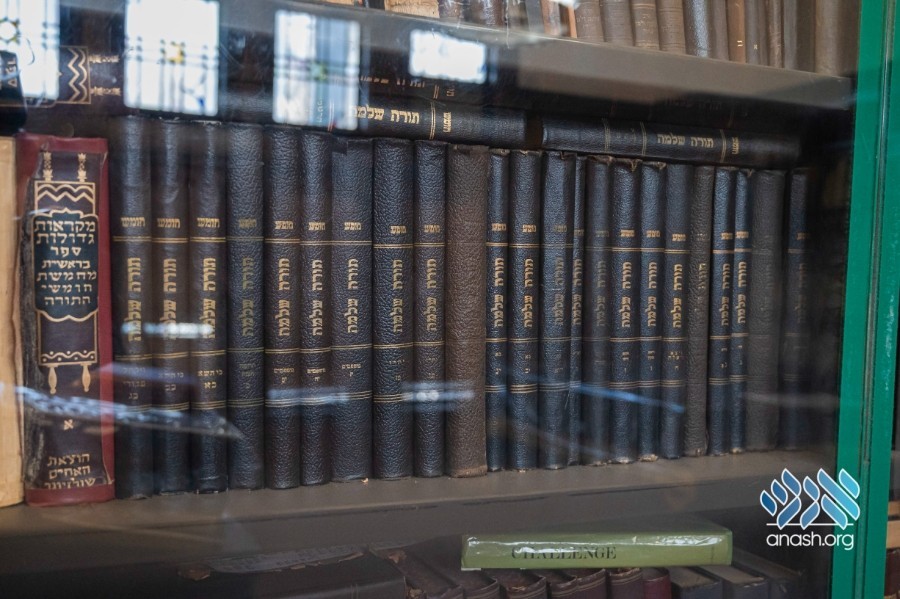


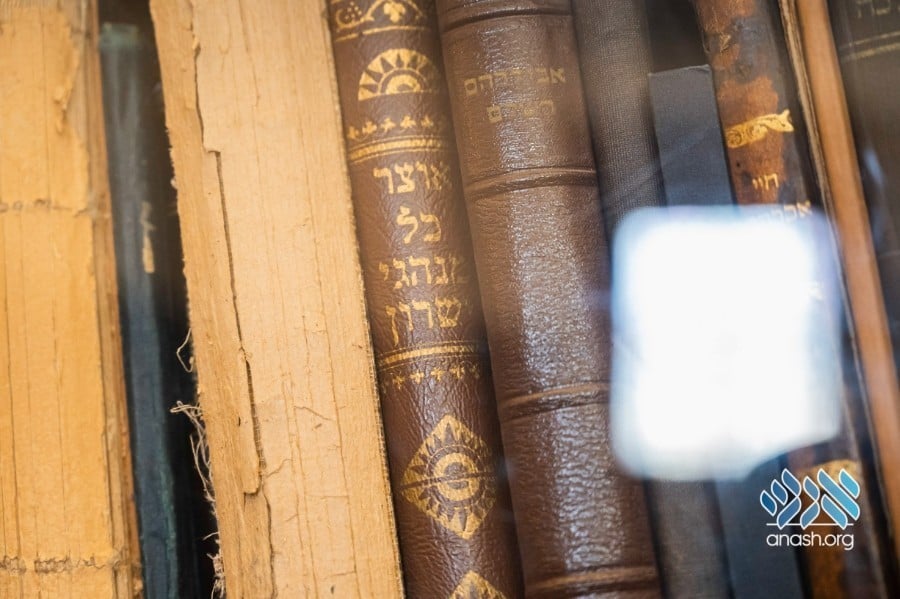



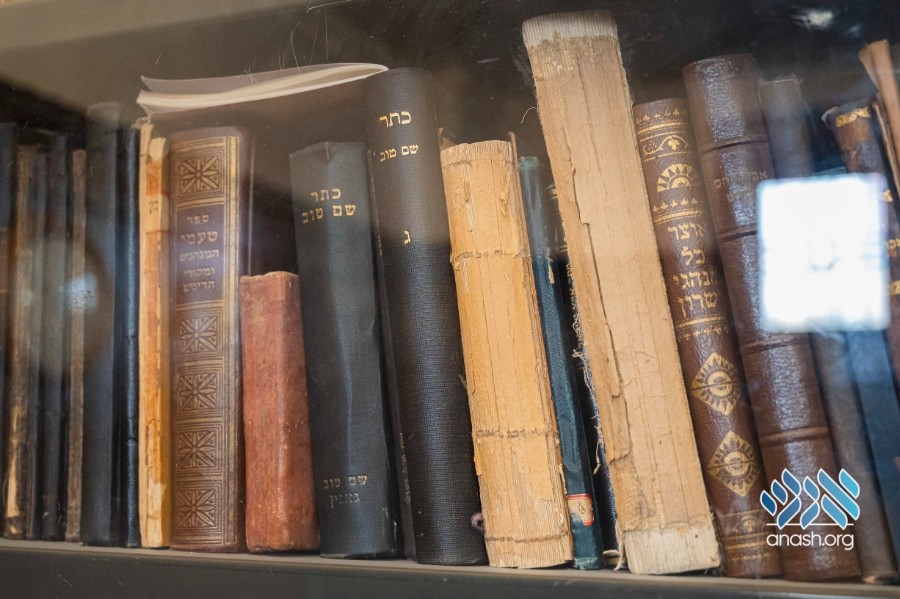
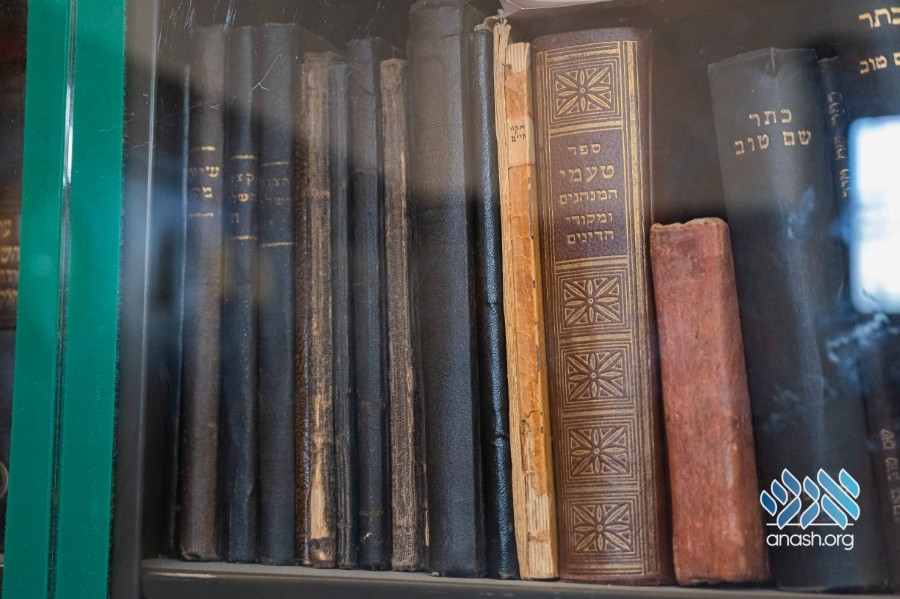
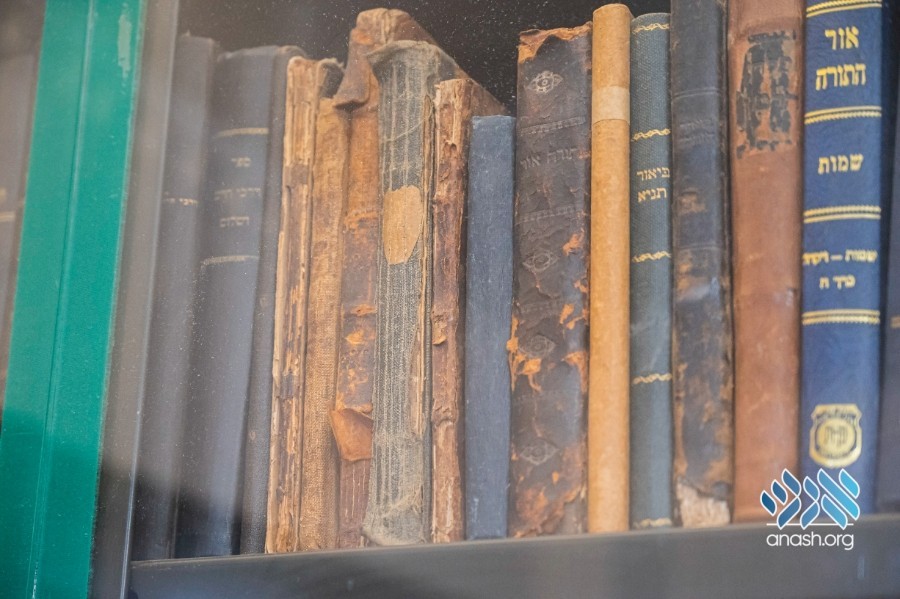
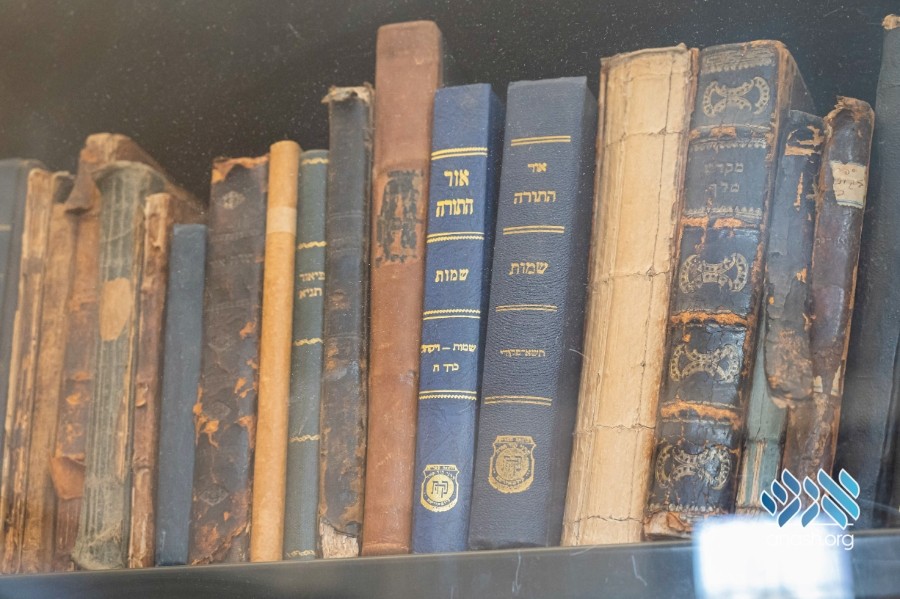
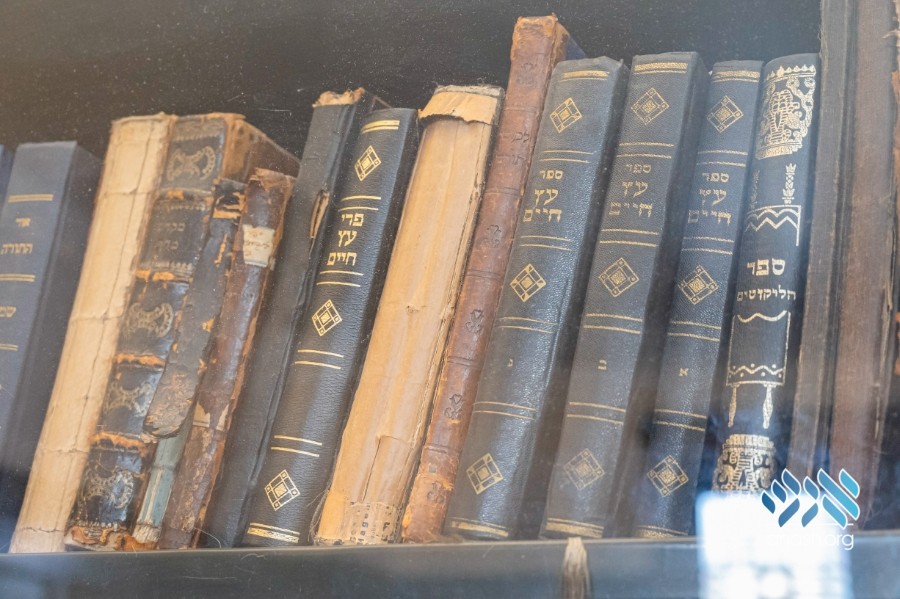
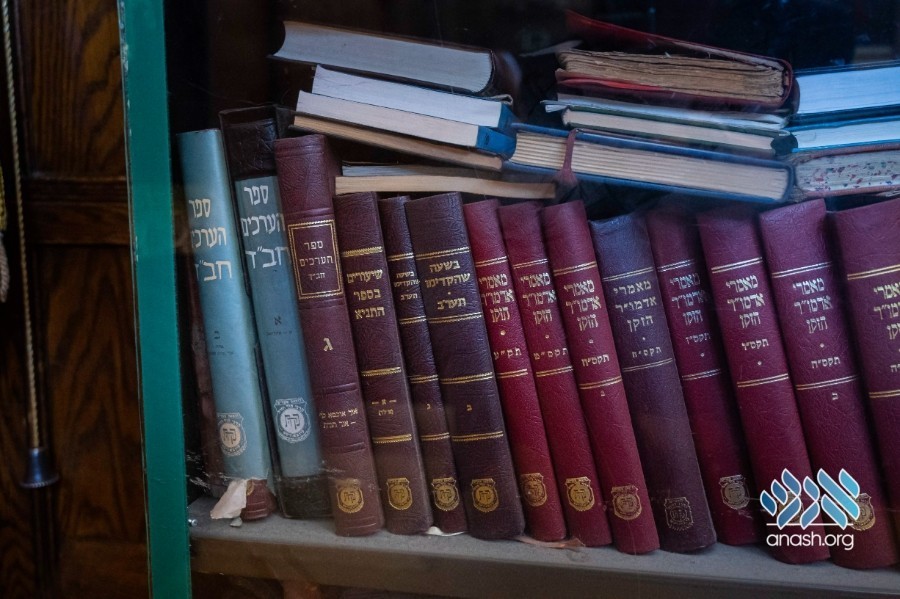
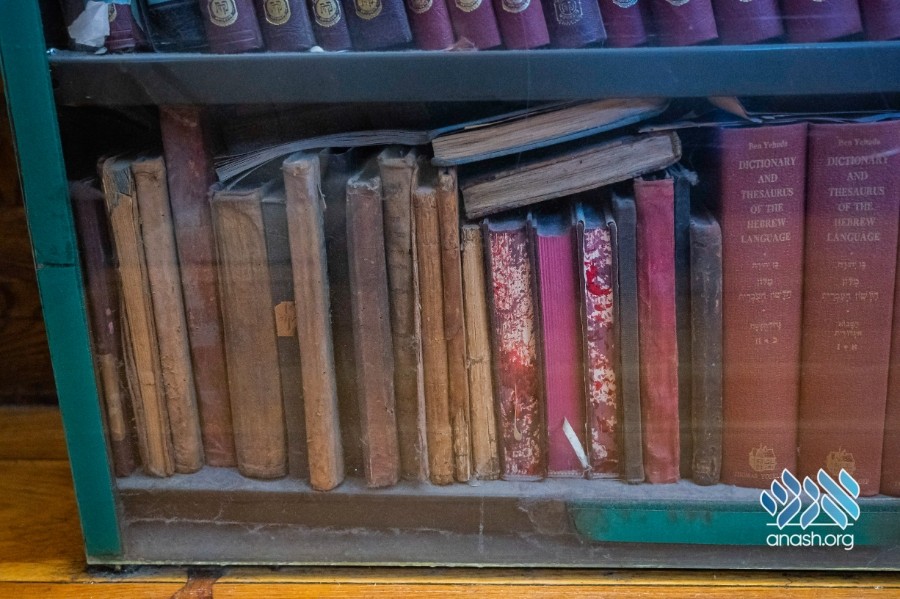
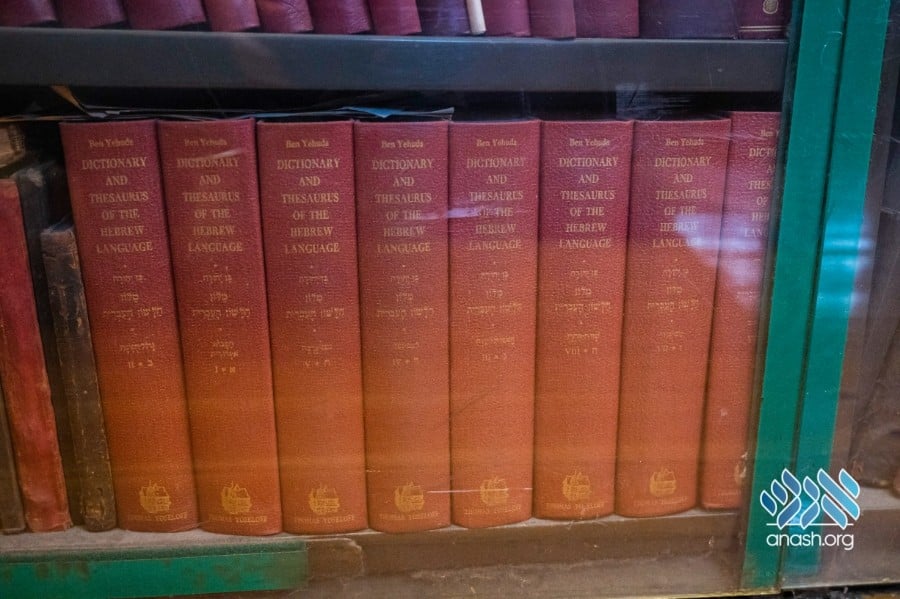

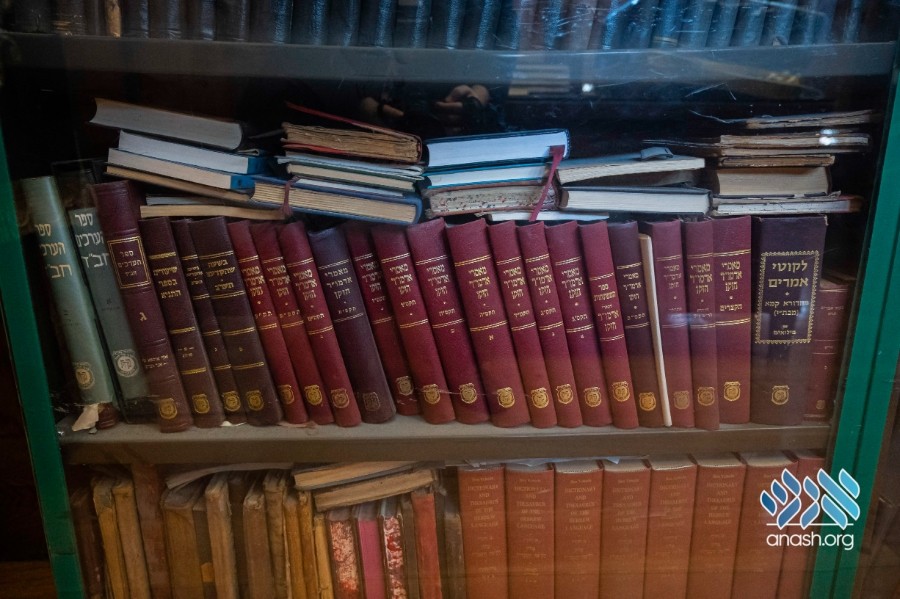
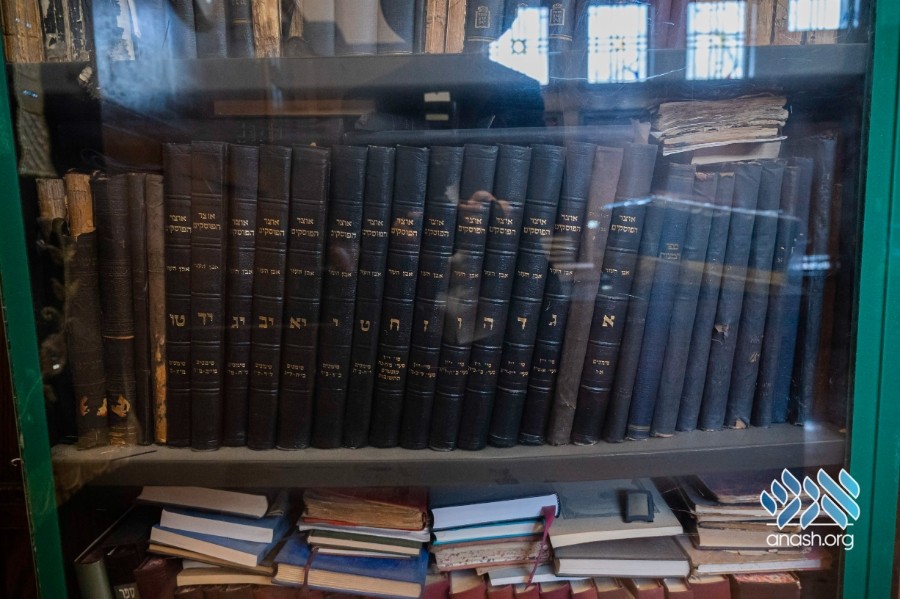
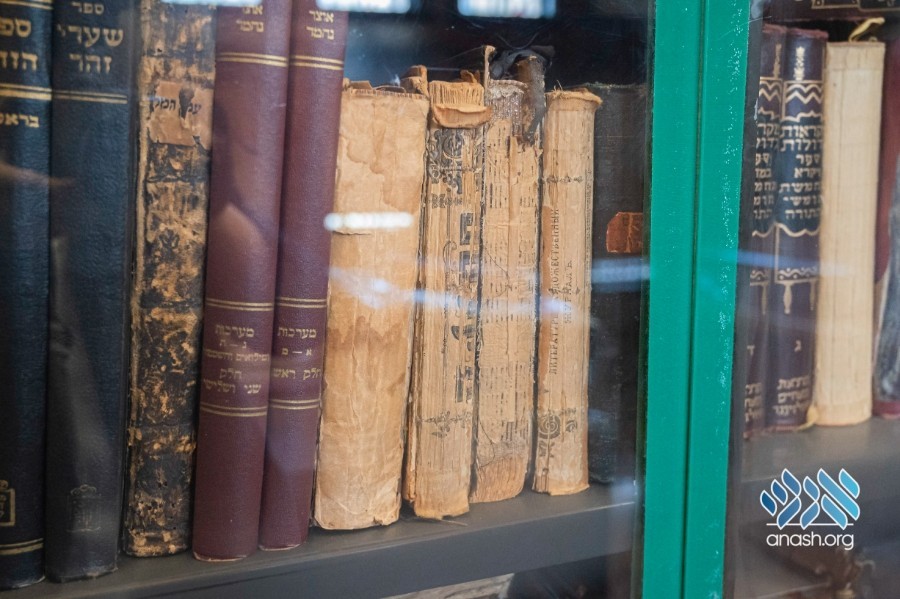
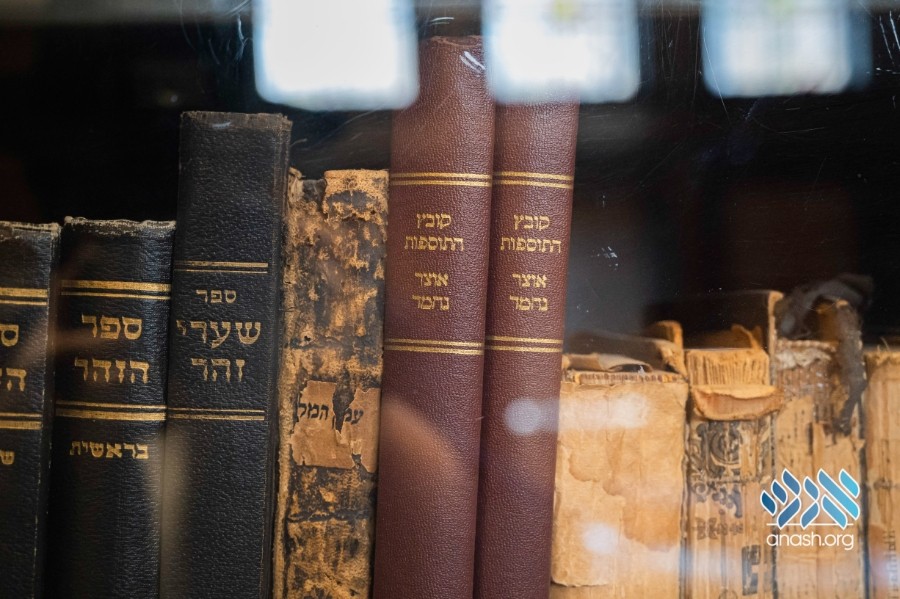

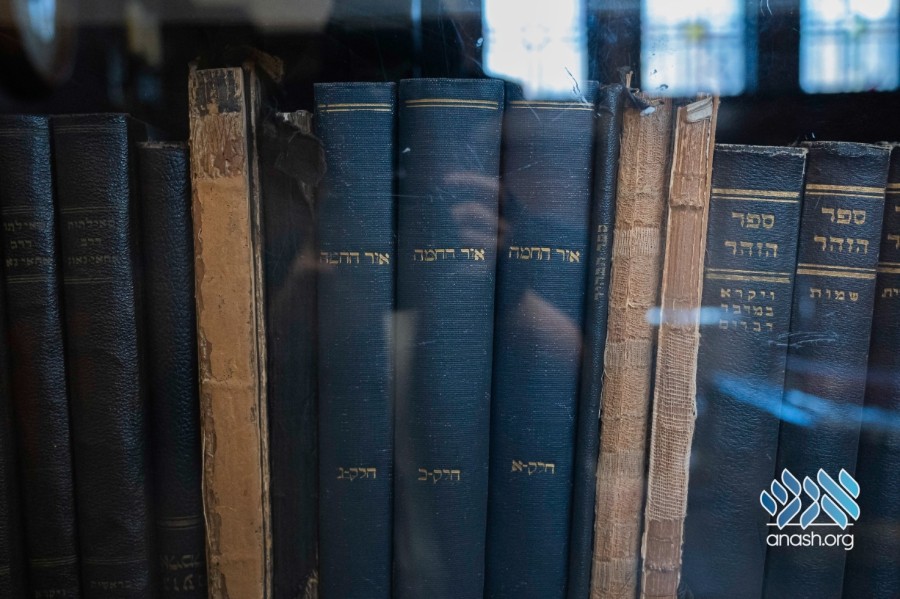

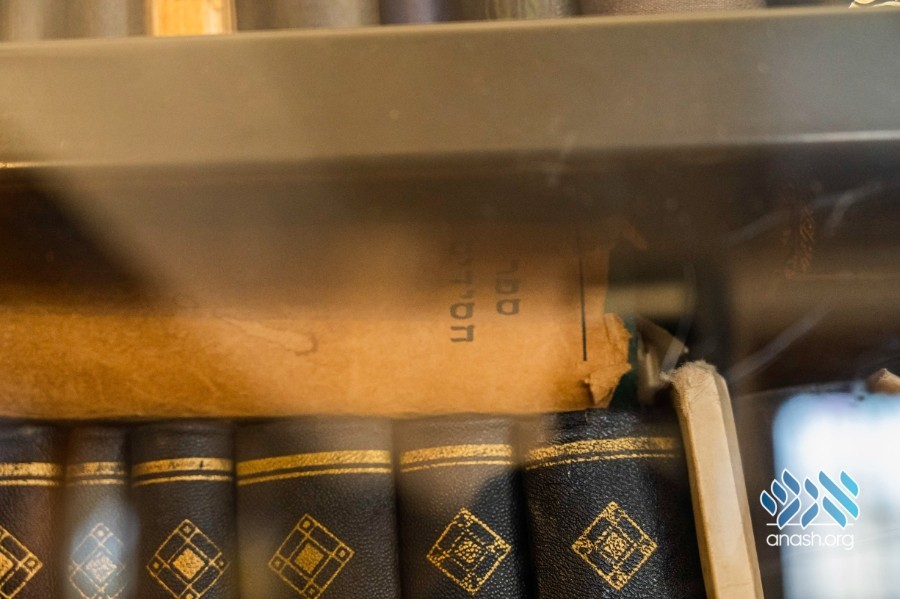

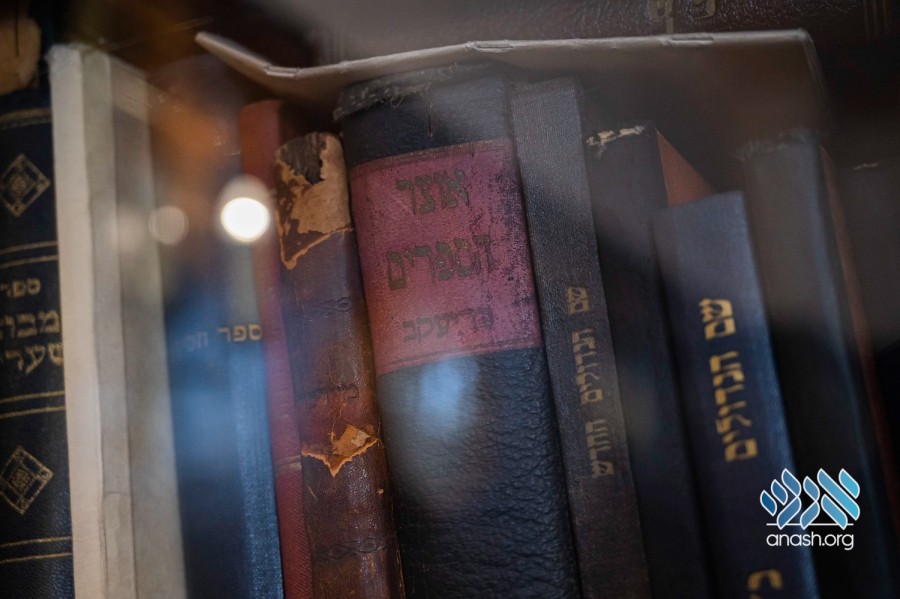
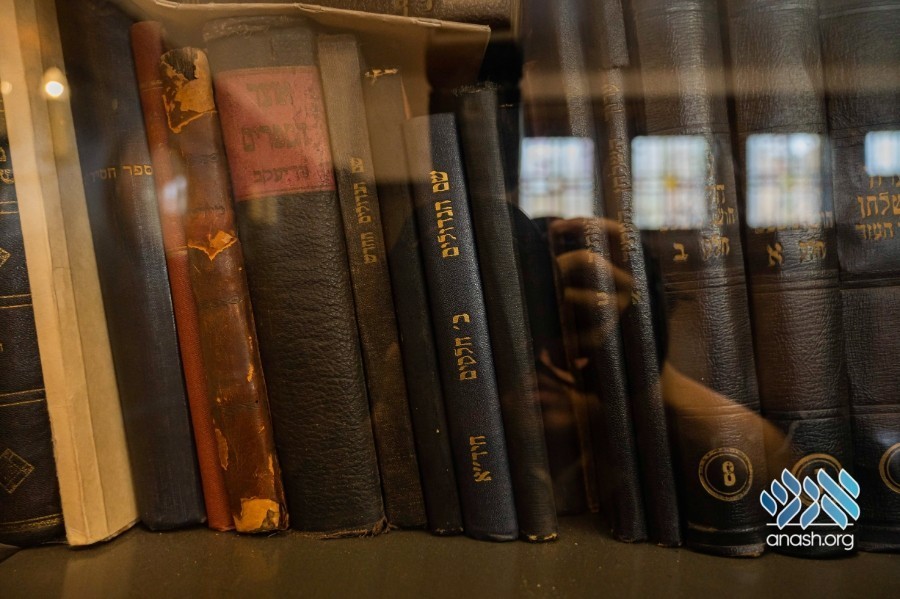
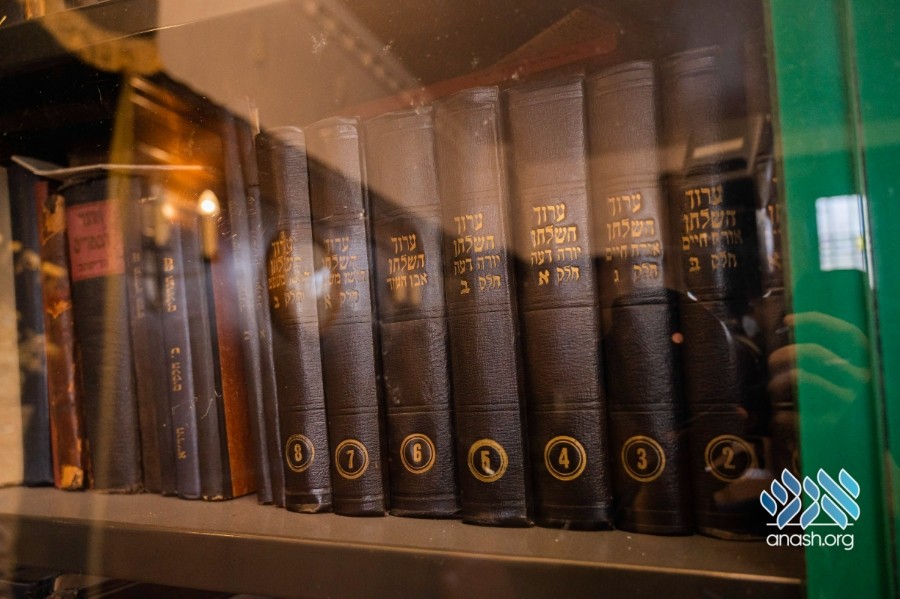
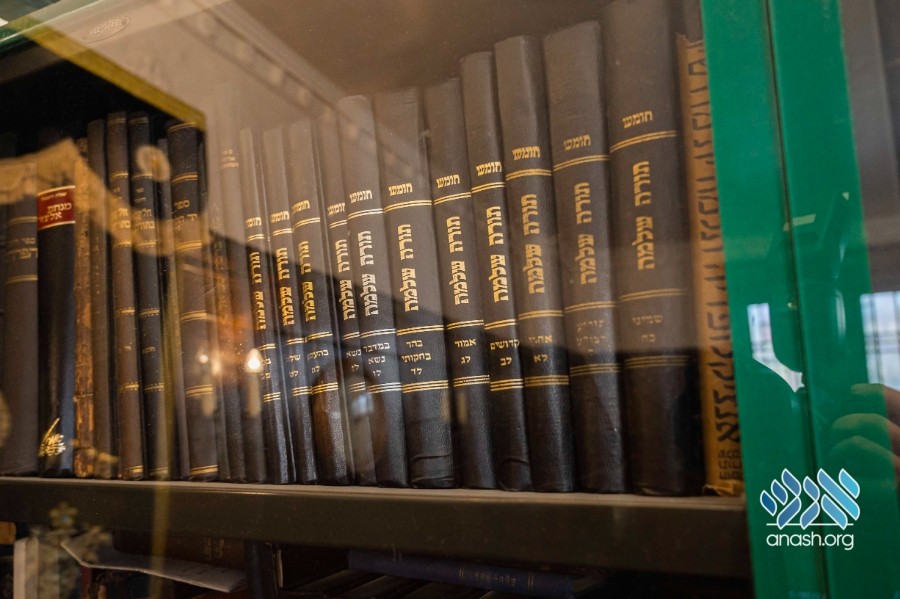
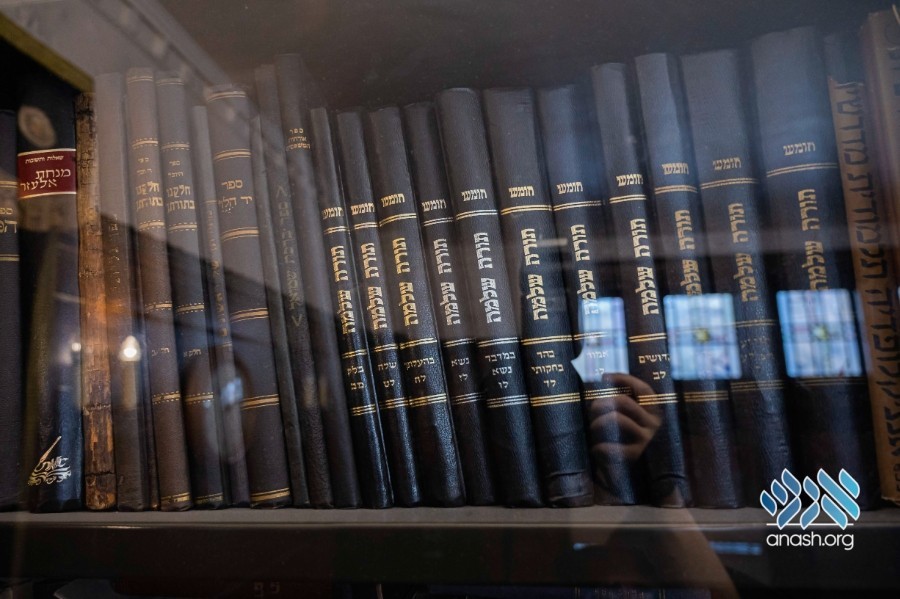



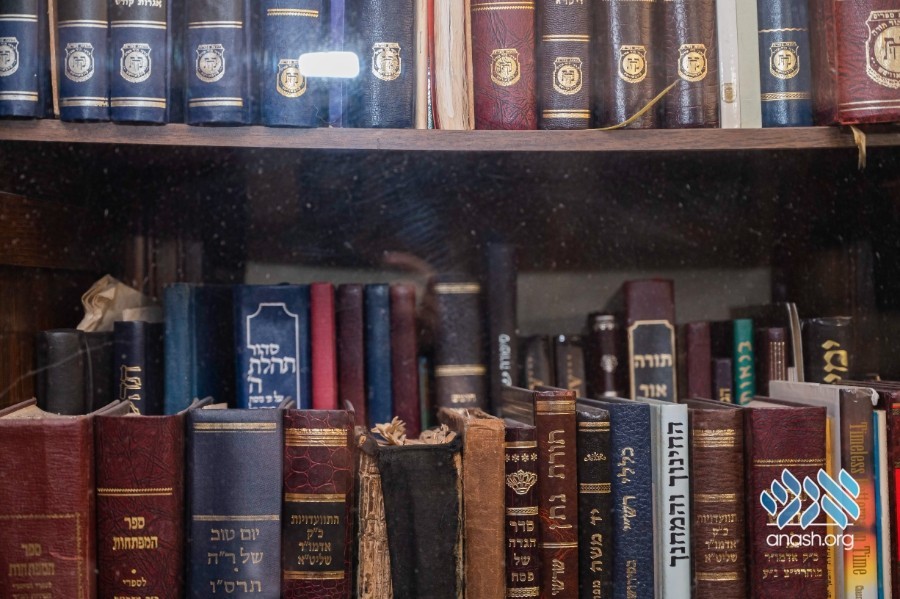

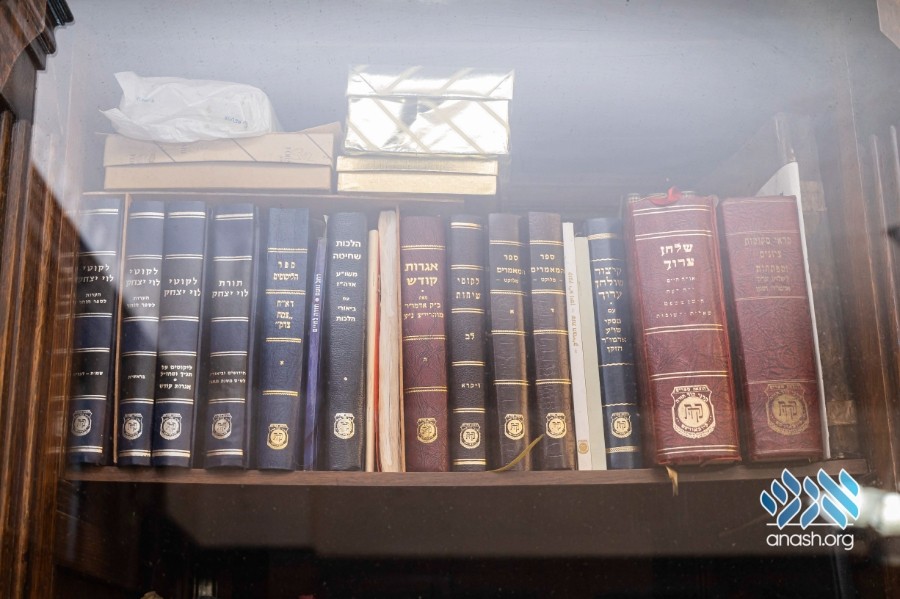
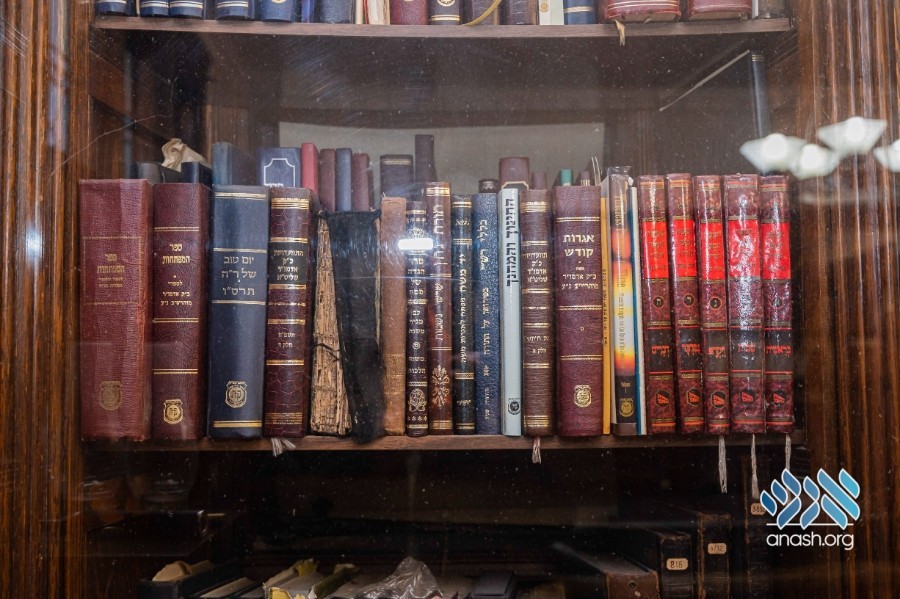
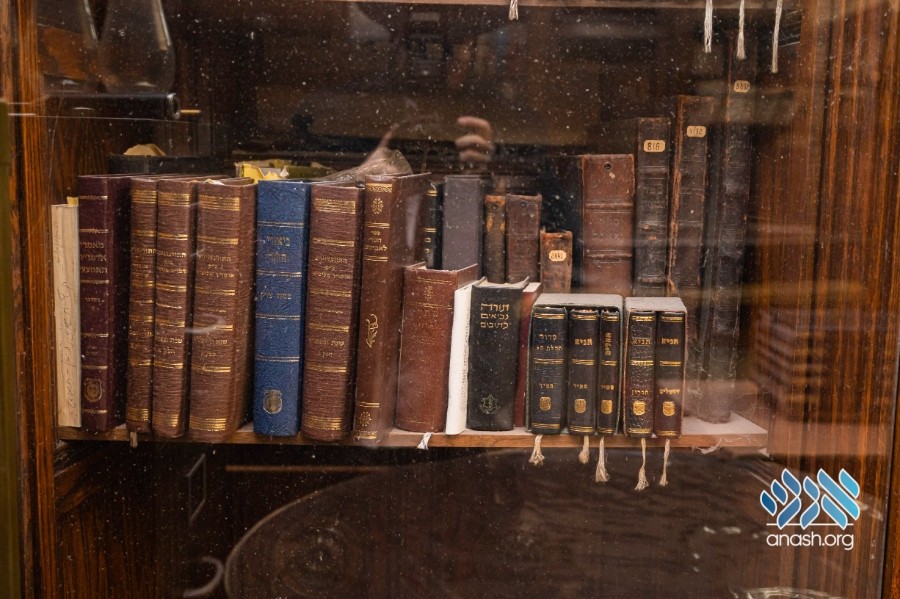

‘Der Otzar fun di Yidisher Shprach’ – correction: ‘Der Otzar fun DER Yidisher Shprach.’
Unfortunately, many Lubavitchers are unaware of the basic rules of Yiddish grammar. ‘Der’ and ‘Di’ are NOT interchangeable. ‘der’ describes a masculine noun (der rebbe), while ‘di’ describes a feminine noun (di rebbetzin). ‘Shprach’ is a feminine noun; however when prefaced with a preposition (e.g. in, from, to, at, between etc.), like in this case where the preposition ‘fun’ (from) modifies the sentence, the usual feminine form is reversed into the masculine form. (Example: one would would say ‘DI rebbetzin zogt‘ – the Rebbetzin says. However, the proper way of saying ‘I heard from the Rebbetzin’ in Yiddish is: ich hub gehert fun DER rebbetzin. I know this can be very confusing to the uninitiated!).
Hence, ‘di shprach’ changes to ‘preposition-fun (from) der shprach.’ The entire clause following the proposition including the adjectives now need to follow the masculine form. Hence, it is correct to write “fun der Yidisher shprach.” (Yidisher in this sentence functions as an adjective to describe the noun ‘shprach’ I.e. which language? the Yiddish language).
According to proper Yiddish grammar writing “fun di Yidisher shprach,’ is a contradiction in terms. The sentence must be constructed either using a masculine, feminine, or neutral form, not a jumbled sentence containing both.
I hate to be pedantic about this, but I have seen cases of edited hanochos of the Rebbe, where the Rebbe had to correct basic Yiddish grammar mistakes, because apparently there were manichim who were unaware of basic rules of Yiddish grammar. In general, while the older generation of Yiddish speakers from Eastern-Europe properly internalized the basic rules of Yiddish grammar automatically, after the Holocaust, and especially among American born Lubavitchers whose primary language is English, many of these rules (especially relating to the different gendered forms) have fallen by the wayside, to the extent that many people (even those with a good Yiddish vocabulary) are totally unaware that ‘der’ and ‘di’ are not interchangeable synonyms, but rather different gender form.
I hope Lubavitchers will start paying more attention to the proper grammatical rules that apply when using the Rebbe’s language.